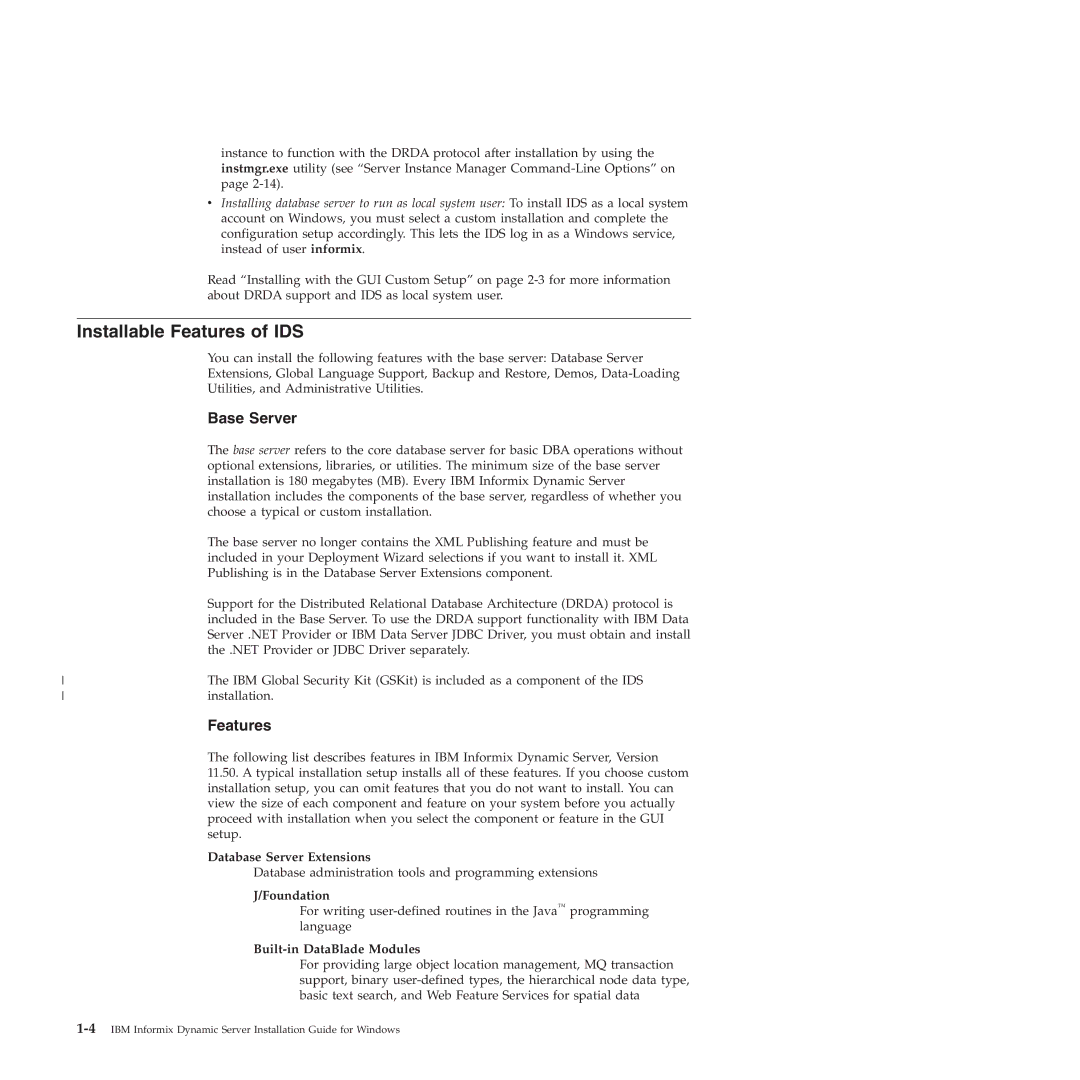instance to function with the DRDA protocol after installation by using the instmgr.exe utility (see “Server Instance Manager
vInstalling database server to run as local system user: To install IDS as a local system account on Windows, you must select a custom installation and complete the configuration setup accordingly. This lets the IDS log in as a Windows service, instead of user informix.
Read “Installing with the GUI Custom Setup” on page
Installable Features of IDS
| You can install the following features with the base server: Database Server |
| Extensions, Global Language Support, Backup and Restore, Demos, |
| Utilities, and Administrative Utilities. |
| Base Server |
| The base server refers to the core database server for basic DBA operations without |
| optional extensions, libraries, or utilities. The minimum size of the base server |
| installation is 180 megabytes (MB). Every IBM Informix Dynamic Server |
| installation includes the components of the base server, regardless of whether you |
| choose a typical or custom installation. |
| The base server no longer contains the XML Publishing feature and must be |
| included in your Deployment Wizard selections if you want to install it. XML |
| Publishing is in the Database Server Extensions component. |
| Support for the Distributed Relational Database Architecture (DRDA) protocol is |
| included in the Base Server. To use the DRDA support functionality with IBM Data |
| Server .NET Provider or IBM Data Server JDBC Driver, you must obtain and install |
| the .NET Provider or JDBC Driver separately. |
The IBM Global Security Kit (GSKit) is included as a component of the IDS | |
installation. | |
| Features |
The following list describes features in IBM Informix Dynamic Server, Version
11.50.A typical installation setup installs all of these features. If you choose custom installation setup, you can omit features that you do not want to install. You can view the size of each component and feature on your system before you actually proceed with installation when you select the component or feature in the GUI setup.
Database Server Extensions
Database administration tools and programming extensions
J/Foundation
For writing
Built-in DataBlade Modules
For providing large object location management, MQ transaction support, binary
